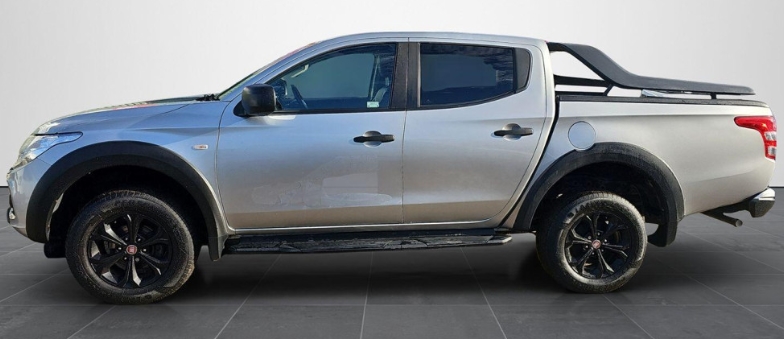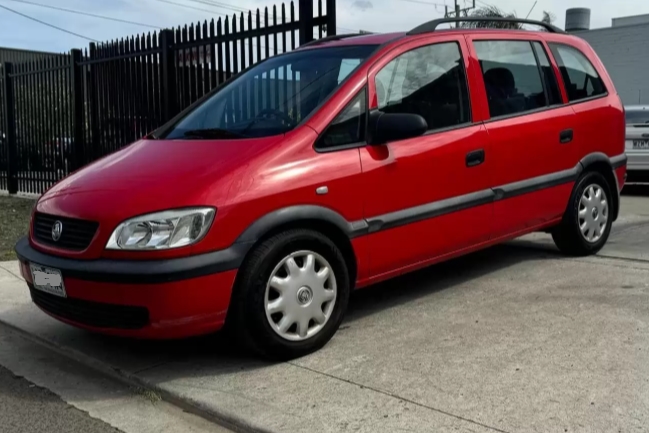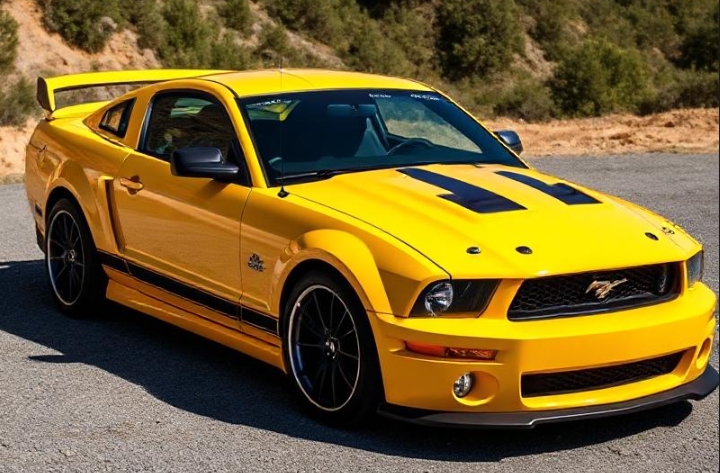The Fiat Fullback: A Tale of Badge Engineering and a Brief Foray into the Pickup World
In the vast and competitive landscape of the global automotive industry, the one-ton mid-size pickup truck segment is a battlefield dominated by titans. Names like the Toyota Hilux, Ford Ranger, and Isuzu D-Max are etched into the minds of consumers who demand ruggedness, reliability, and versatility. For an automaker to enter this arena is a monumental undertaking, requiring billions in research and development. In 2015, Fiat Professional, the commercial vehicle arm of Fiat Chrysler Automobiles (FCA), decided to take a shortcut. The result was the Fiat Fullback, a competent and capable-yet-ultimately-fleeting chapter in the brand’s history. This is the story of its evolution, from its strategic birth to its abrupt end.
The Strategic Alliance: Birth of the Fullback (2015-2016)
The genesis of the Fiat Fullback lies not in Turin, Italy, but in Tokyo, Japan. By the mid-2010s, Fiat Professional boasted a robust line-up of vans like the Ducato, Doblò, and Fiorino, but it had a significant gap in its portfolio for the lucrative Europe, Middle East, and Africa (EMEA) markets: a proper one-ton pickup. Developing an entirely new truck from scratch would have been a prohibitively expensive and time-consuming venture.
The solution came through a strategic partnership with Mitsubishi Motors. At the time, Mitsubishi was launching the fifth generation of its highly respected L200 pickup (also known as the Triton in many markets). This truck was renowned for its robust ladder-frame chassis, proven diesel engines, and a sophisticated four-wheel-drive system. For Fiat, this presented a perfect opportunity for a practice known as “badge engineering”—taking an existing vehicle from another manufacturer, making minor cosmetic changes, and selling it as your own.
The agreement was signed, and in November 2015 at the Dubai International Motor Show, the world was introduced to the Fiat Fullback. The name itself was chosen to evoke toughness and reliability, derived from the key defensive and offensive position in both rugby and American football. It was a clear statement of intent: this truck was built to be a dependable workhorse and a versatile all-rounder. Sales officially commenced across the EMEA region in 2016.
.
THIS is GOOD stuff if your car is in need:

.
The Initial Line-up: A Model for Every Need (2016-2017)
The Fullback launched with a comprehensive range designed to cater to the full spectrum of pickup truck buyers, from construction site managers to lifestyle-oriented families. The vehicle was fundamentally a Mitsubishi L200, sharing its body panels, chassis, interior architecture, and powertrain. Fiat’s contribution was limited to a unique front grille with the prominent Fiat badge, slightly different wheel designs, and brand-specific badging on the tailgate and steering wheel.
The range was structured around three primary body styles:
- Single Cab: This was the quintessential workhorse. Featuring two doors and a long, uninterrupted load bed, the Single Cab was designed for maximum payload and utility. It was aimed squarely at commercial users who valued cargo capacity above all else.
- Extended Cab (or Club Cab): Acting as a compromise between the Single and Double Cab, the Extended Cab featured a pair of small, rear-hinged “suicide” doors that provided access to a small rear seating area. These seats were suitable for short trips or for storing tools and equipment securely inside the cabin. It offered more interior flexibility than the Single Cab while retaining a longer bed than the Double Cab.
- Double Cab: This was the most popular and versatile configuration. With four full-sized, front-hinged doors and comfortable seating for up to five adults, the Double Cab was positioned as the do-it-all vehicle. It could serve as a rugged commercial vehicle during the week and a family car on the weekend. While its load bed was shorter than the other variants, its blend of passenger comfort and cargo space made it the ideal choice for dual-use owners.
To complement these body styles, Fiat offered two primary trim levels at launch: SX and LX.
- Fiat Fullback SX: As the entry-level trim, the SX was spartan and functional. It was identifiable by its durable, unpainted black plastic front bumper, grille, and door mirrors. It typically came with 16-inch steel wheels, vinyl or basic cloth upholstery, manual air conditioning, and a simple radio system. Safety features like ABS and electronic stability control were standard, but creature comforts were minimal. The SX was most commonly available in Single and Extended Cab formats, reinforcing its role as a no-frills work truck.
- Fiat Fullback LX: The LX trim level represented a significant step up in comfort and aesthetics, primarily aimed at Double Cab buyers. It transformed the Fullback from a pure utility vehicle into a more refined daily driver. Key upgrades included body-coloured bumpers, a chrome-accented grille and door mirrors, 17-inch alloy wheels, and front fog lamps. Inside, the LX offered a more premium cloth upholstery, automatic climate control, a leather-wrapped steering wheel and gear knob, cruise control, and a touchscreen infotainment system with Bluetooth connectivity. Side steps and rear privacy glass completed the more upscale look.
The Mitsubishi Heart: Powertrain and Capability
Under the bonnet, the Fullback was pure Mitsubishi. The sole engine option for the European market was Mitsubishi’s excellent 2.4-litre MIVEC four-cylinder turbo-diesel engine. Fiat offered it in two states of tune to correspond with different trim levels and market demands:
- A 150 horsepower version producing 380 Nm of torque.
- A higher-output 180 horsepower version producing a potent 430 Nm of torque.
This all-aluminium engine was noted for its refinement and efficiency compared to older-generation diesel powerplants. Buyers could pair this engine with either a standard six-speed manual transmission or an optional five-speed automatic transmission with a sport mode.
The Fullback’s off-road prowess was also inherited directly from the L200. Lower-spec models featured a part-time 4WD system, but higher-spec LX models were equipped with Mitsubishi’s famed Super Select 4WD-II system. This was a standout feature in the segment, allowing the driver to switch between high-range rear-wheel drive (2H), high-range full-time four-wheel drive (4H), high-range four-wheel drive with a locked centre differential (4HLc), and low-range four-wheel drive with a locked centre differential (4LLc). The ability to run in full-time 4WD on paved surfaces was a significant safety and convenience advantage over many rivals. For extreme conditions, an electronic locking rear differential was also available.
The Pinnacle of the Range: The Fiat Fullback Cross (2017-2019)
As the mid-size pickup market evolved, a new trend emerged: the high-specification “lifestyle” truck. Models like the Ford Ranger Wildtrak and Toyota Hilux Invincible proved there was a strong appetite for pickups that combined rugged capability with premium styling and features. In 2017, Fiat responded with its own flagship model: the Fiat Fullback Cross.
The Cross was an ambitious and visually striking addition to the line-up, available exclusively in the Double Cab configuration. It was designed to be the ultimate expression of the Fullback, loaded with exclusive features and a distinct, aggressive aesthetic. Key features that set the Fullback Cross apart included:
- Exclusive Styling Pack: All chrome elements were replaced with a stylish textured matte black finish. This included the front grille, skid plate, door mirrors, door handles, and extended wheel arches.
- Black Sports Bar: A distinctive and aerodynamic black sports bar was fitted over the cargo bed, giving the Cross a more athletic and purposeful silhouette.
- Black Accents: The Cross featured black side steps and exclusive 17-inch black alloy wheels.
- Premium Interior: The cabin was upgraded with standard black leather upholstery, heated front seats, and a 7-inch touchscreen infotainment system with satellite navigation and a reversing camera.
- Top-Tier Performance: The Cross came standard with the most powerful 180 horsepower engine and was often paired with the five-speed automatic transmission. The full Super Select 4WD-II system and the locking rear differential were also included as standard equipment.
The Fullback Cross was Fiat’s concerted effort to capture a piece of the high-margin lifestyle pickup market. It was a handsome and well-equipped truck that offered a compelling alternative to the established players.
An Abrupt End: Discontinuation in 2019
Despite a solid foundation and a comprehensive model range culminating in the desirable Cross version, the Fiat Fullback’s time on the market was remarkably short. In 2019, just three years after its full market launch, Fiat Professional announced that the Fullback would be discontinued in Europe.
The decision was driven by a confluence of factors, the most significant of which was impending, stricter European emissions regulations. The introduction of the Worldwide Harmonised Light Vehicle Test Procedure (WLTP) meant that the Mitsubishi-sourced 2.4-litre diesel engine would require costly re-engineering and recalibration to remain compliant. Given that the Fullback was a rebadged vehicle and not a core product developed in-house, FCA deemed the investment required to update the powertrain unjustifiable.
Furthermore, while the Fullback sold in respectable numbers, it never managed to significantly disrupt the market share of established rivals. Competing against the brand loyalty and dealer networks of Ford, Toyota, and Volkswagen was an uphill battle. With sales that were solid but not spectacular, the business case for pouring more money into the platform simply wasn’t strong enough. Consequently, production for the EMEA region ceased.
Legacy and Conclusion
The evolution of the Fiat Fullback is a fascinating case study in modern automotive strategy. It represents a pragmatic, cost-effective approach to entering a new market segment through platform sharing. For a brief period between 2016 and 2019, Fiat was able to offer a genuinely competitive and highly capable pickup truck thanks entirely to its Mitsubishi underpinnings.
From the basic SX Single Cab workhorse to the luxurious and stylish Cross Double Cab, the Fullback range mirrored the needs of the diverse pickup market. It was a vehicle that delivered on its promise of toughness and versatility. However, its identity as a rebadged product also sealed its fate. When faced with the mounting costs of regulatory compliance, its non-core status made it an easy model to sacrifice. The Fiat Fullback remains a short but significant footnote in automotive history—a well-executed but short-lived Italian take on a Japanese classic.







